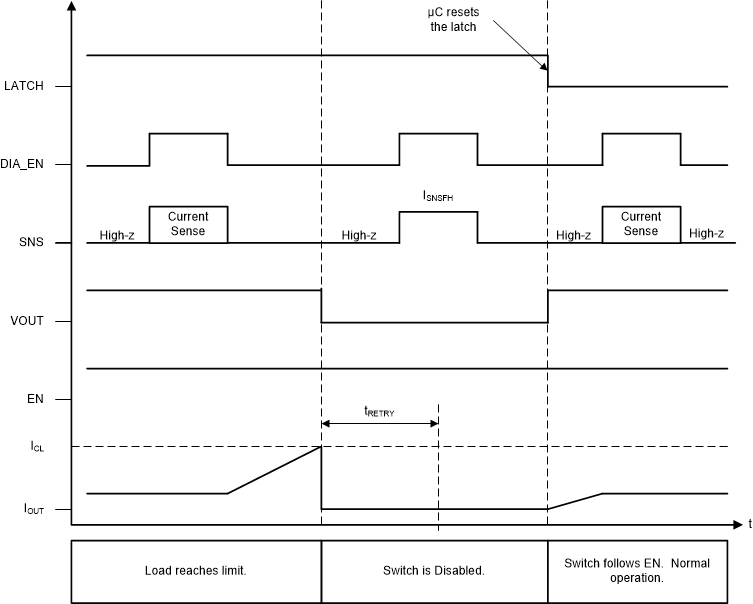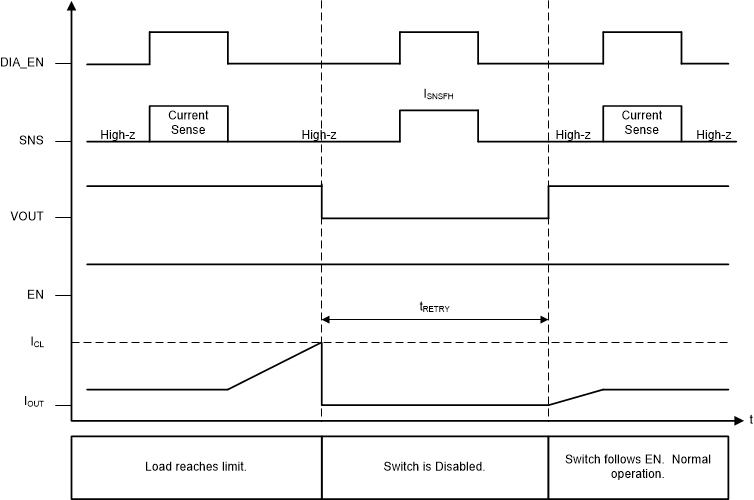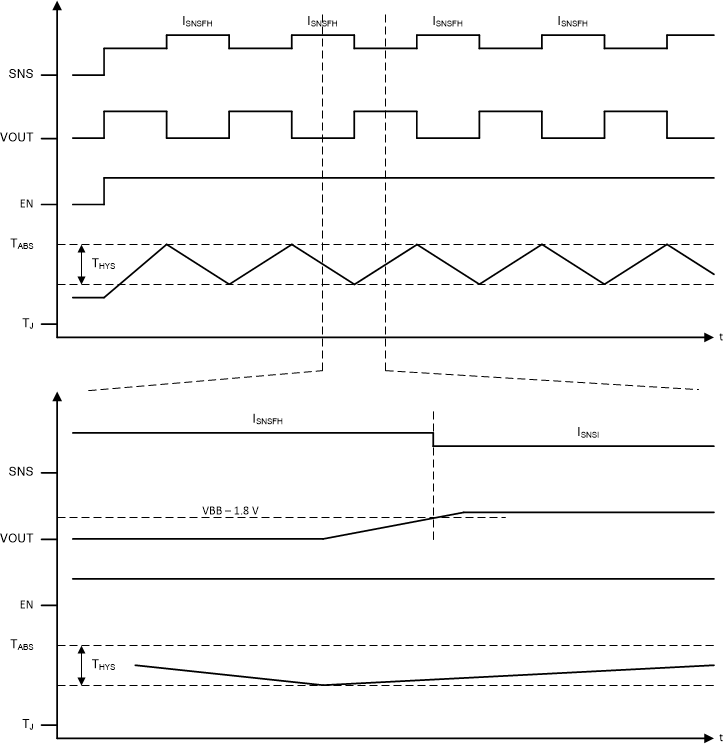JAJSHH4B may 2019 – february 2023 TPS1HB16-Q1
PRODUCTION DATA
- 1 特長
- 2 アプリケーション
- 3 概要
- 4 Revision History
- 5 Device Comparison Table
- 6 Pin Configuration and Functions
- 7 Specifications
- 8 Parameter Measurement Information
-
9 Detailed Description
- 9.1 Overview
- 9.2 Functional Block Diagram
- 9.3
Feature Description
- 9.3.1 Protection Mechanisms
- 9.3.2 Diagnostic Mechanisms
- 9.4 Device Functional Modes
- 10Application and Implementation
- 11Device and Documentation Support
- 12Mechanical, Packaging, and Orderable Information
パッケージ・オプション
メカニカル・データ(パッケージ|ピン)
- PWP|16
サーマルパッド・メカニカル・データ
- PWP|16
発注情報
9.3.1.5 Fault Event – Timing Diagrams
All timing diagrams assume that the SEL1 pin is low.
The LATCH, DIA_EN, and EN pins are controlled by the user. The timing diagrams represent a possible use-case.
Figure 9-5 shows the immediate current limit switch off behavior. The diagram also illustrates the retry behavior. As shown, the switch will remain latched off until the LATCH pin is low.
 Figure 9-5 Current Limit – Version A and B - Latched Behavior
Figure 9-5 Current Limit – Version A and B - Latched BehaviorFigure 9-6 shows the immediate current limit switch off behavior. In this example, LATCH is tied to GND; hence, the switch will retry after the fault is cleared and tRETRY has expired.
 Figure 9-6 Current Limit - Version A and B - LATCH = 0
Figure 9-6 Current Limit - Version A and B - LATCH = 0When the switch retries after a shutdown event, the SNS fault indication will remain until VOUT has risen to VBB – 1.8 V. After VOUT has risen, the SNS fault indication is reset and current sensing is available. If there is a short-to-ground and VOUT is not able to rise, the SNS fault indication will remain indefinitely. Figure 9-7 illustrates auto-retry behavior and provides a zoomed-in view of the fault indication during retry.
Figure 9-7 assumes that tRETRY has expired by the time that TJ reaches the hysteresis threshold.
LATCH = 0 V and DIA_EN = 5 V
 Figure 9-7 Fault Indication During Retry
Figure 9-7 Fault Indication During Retry